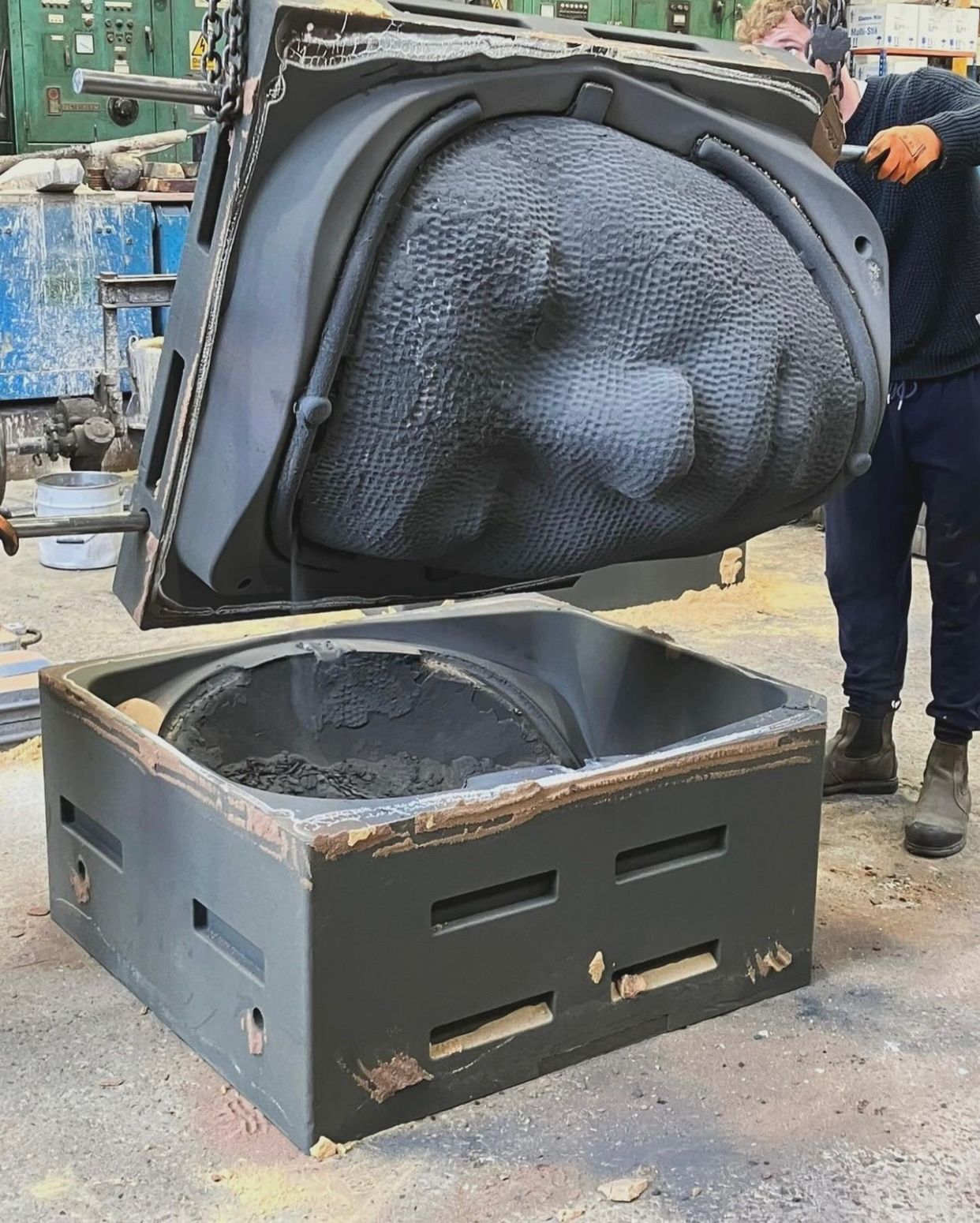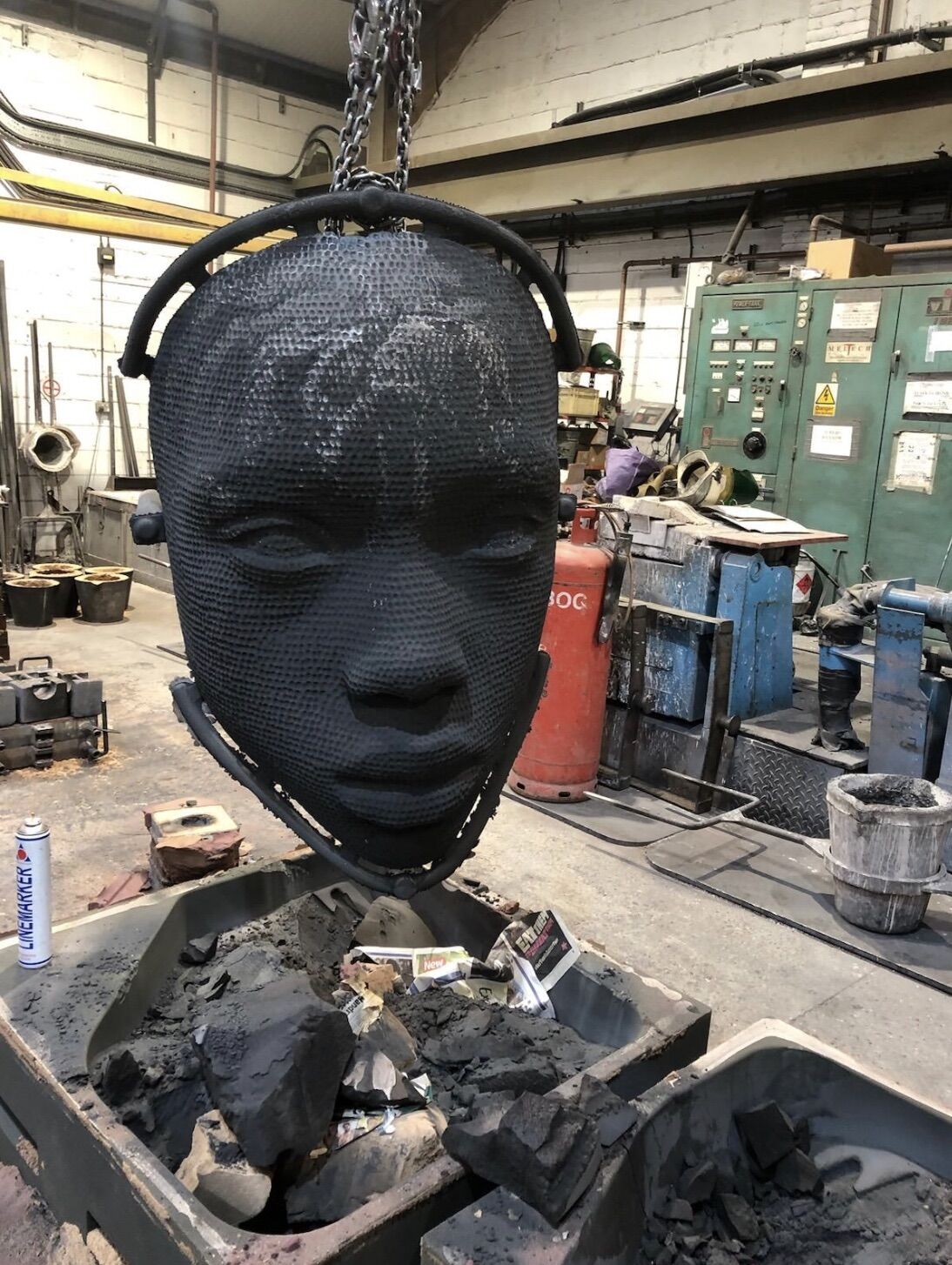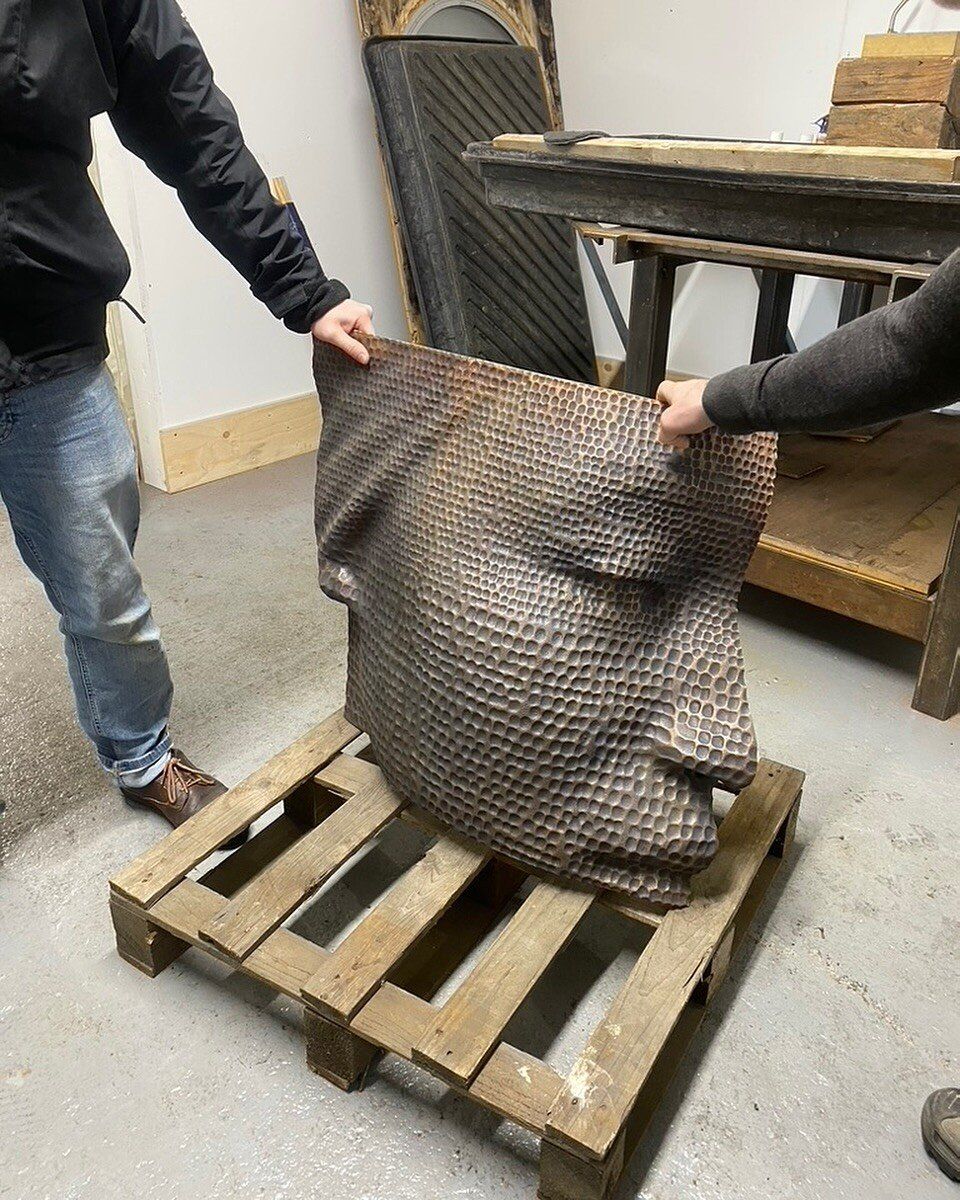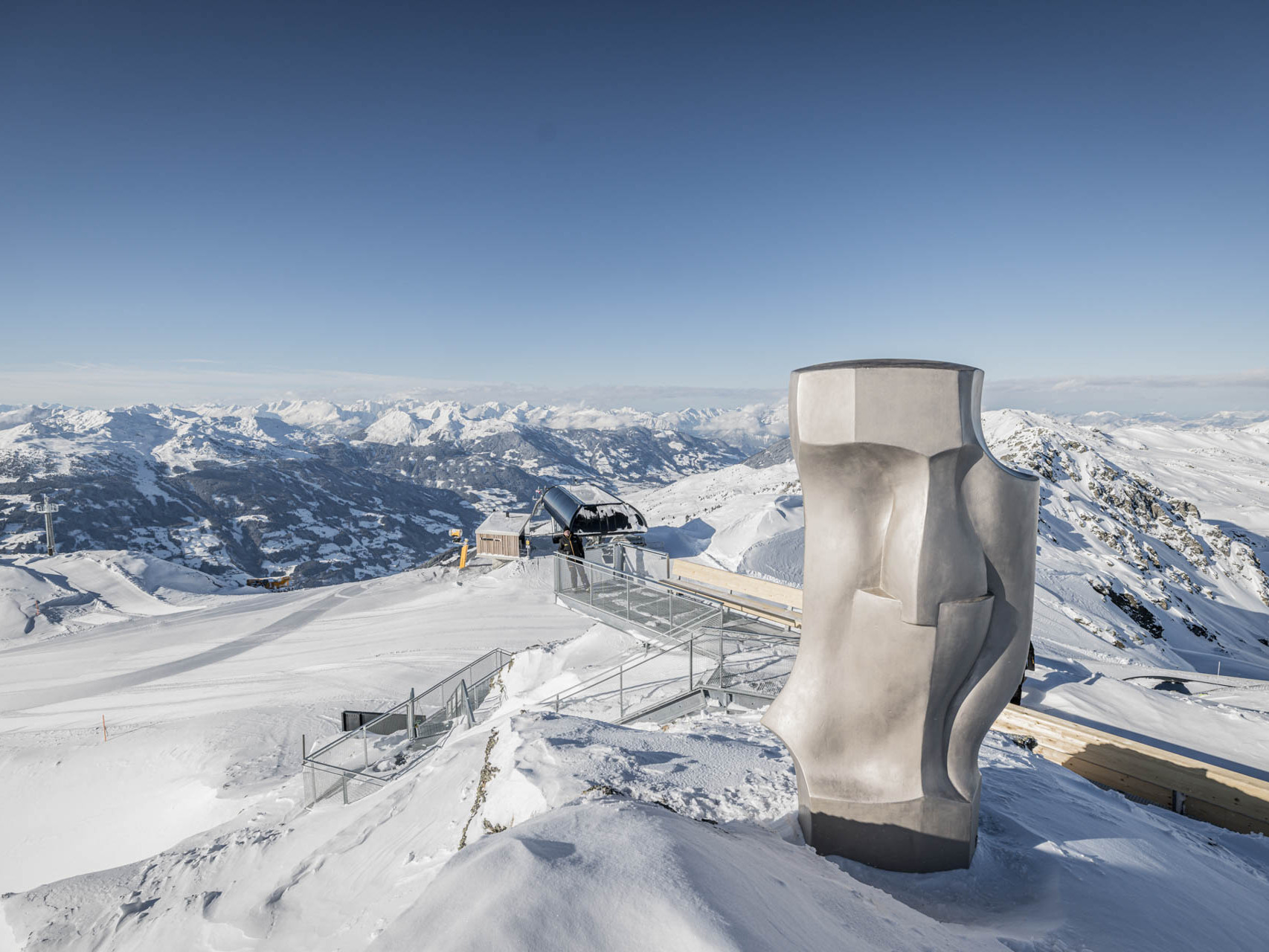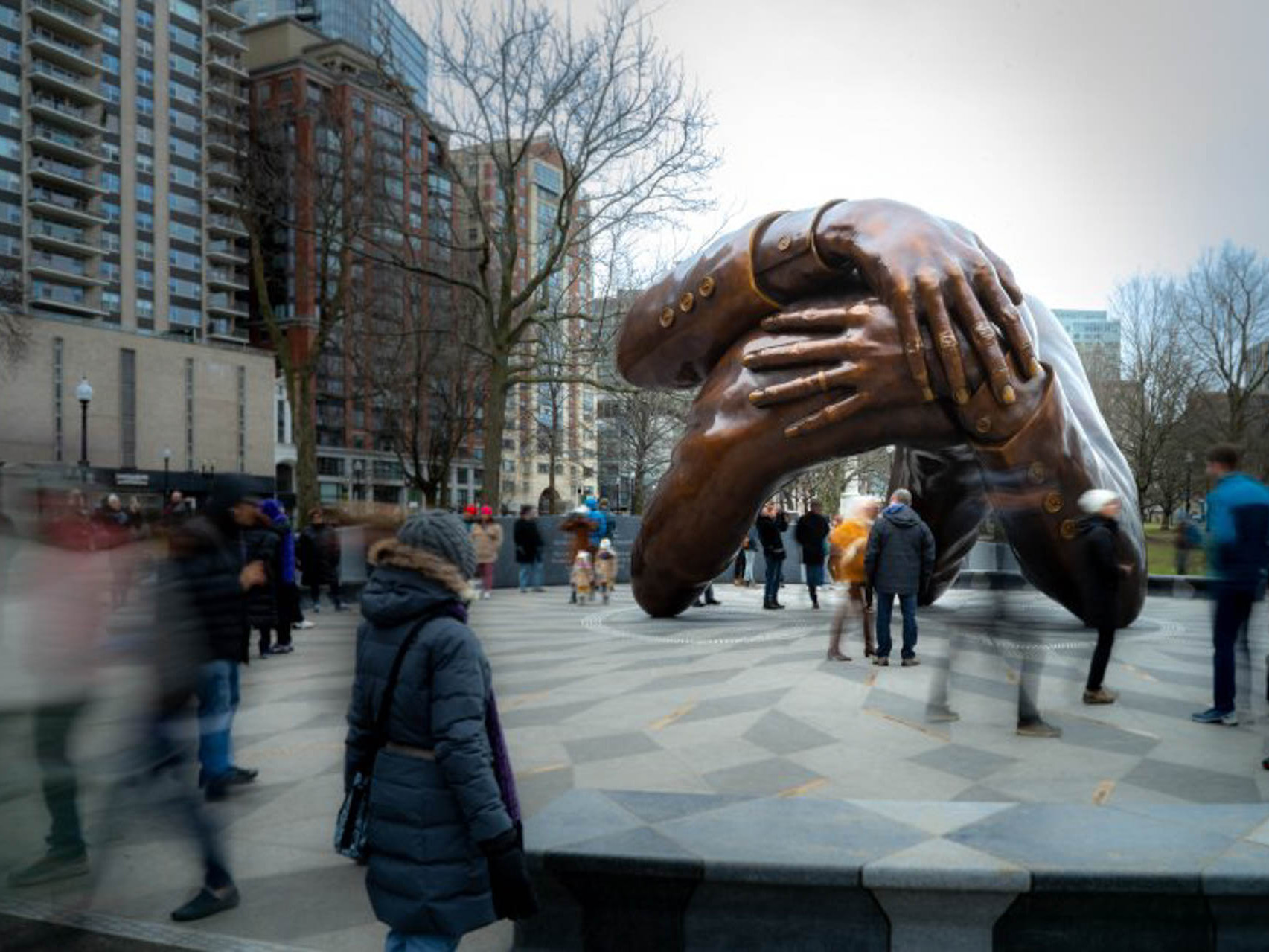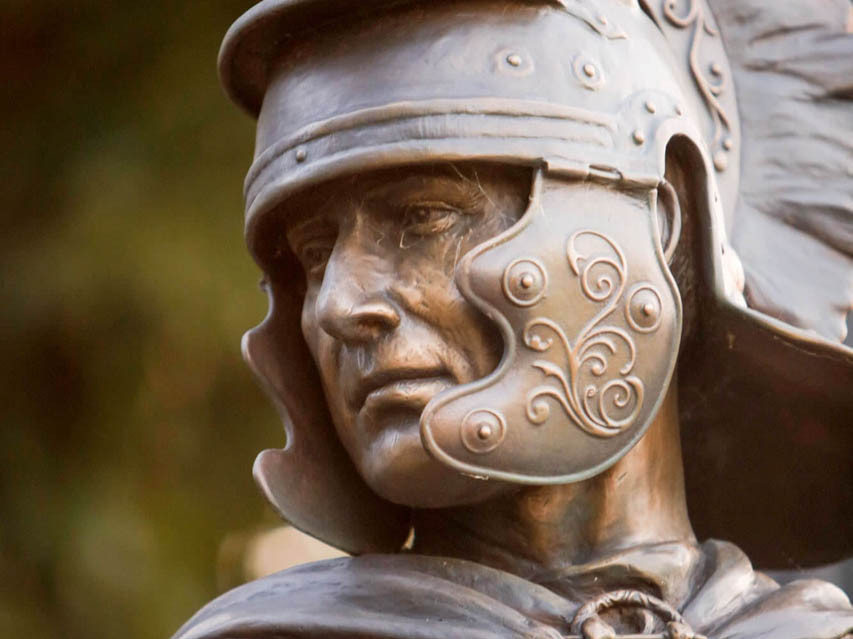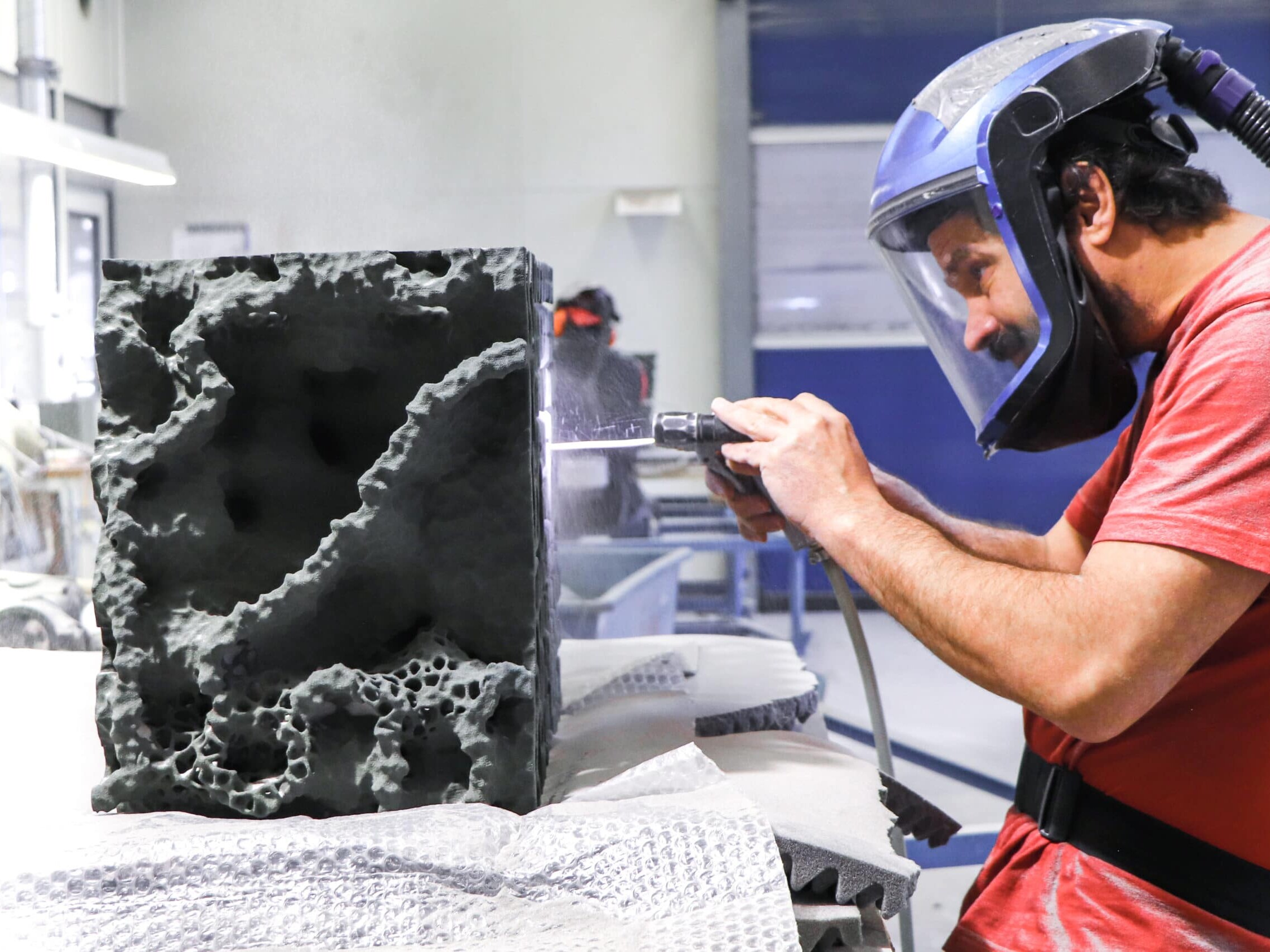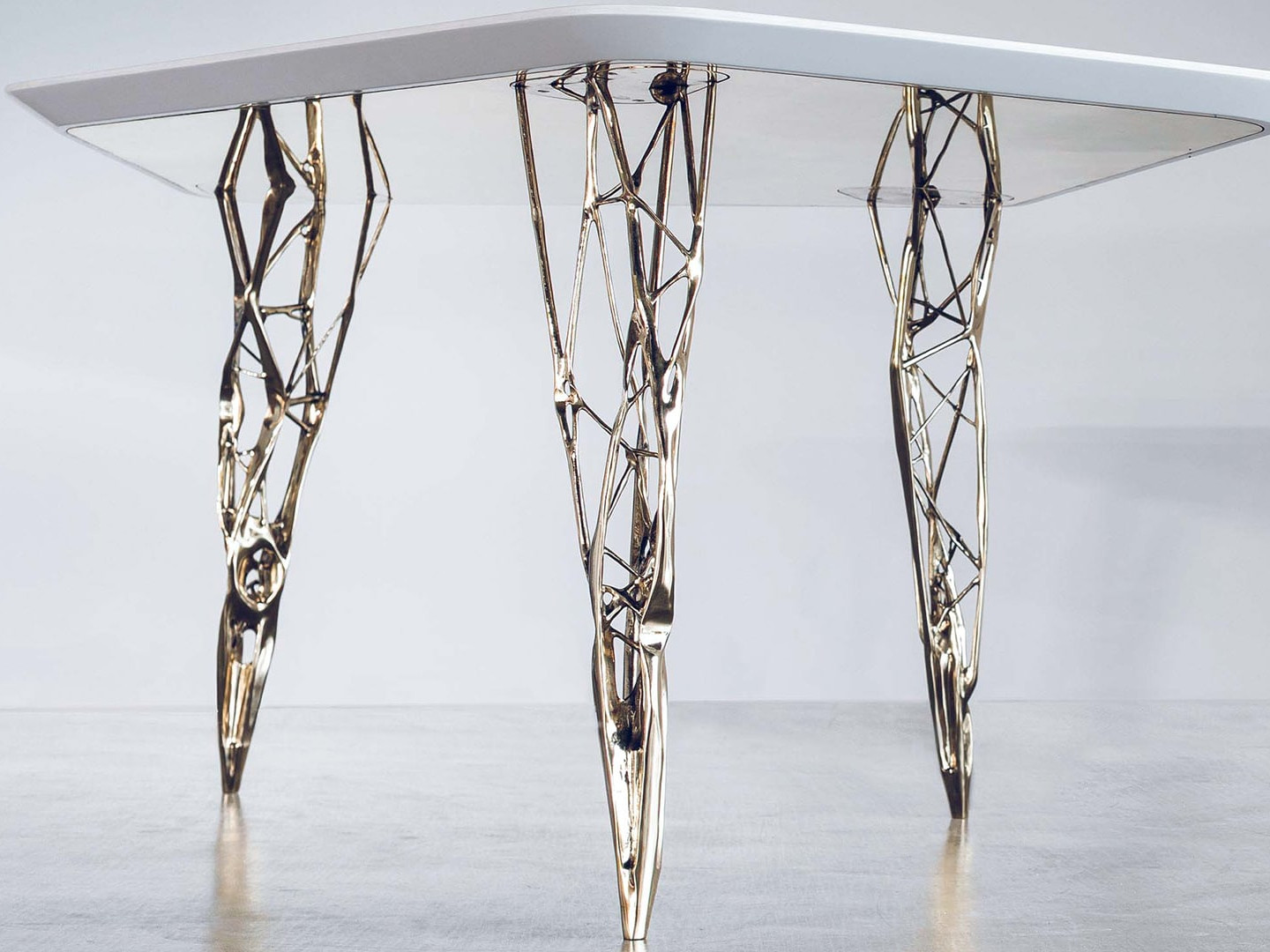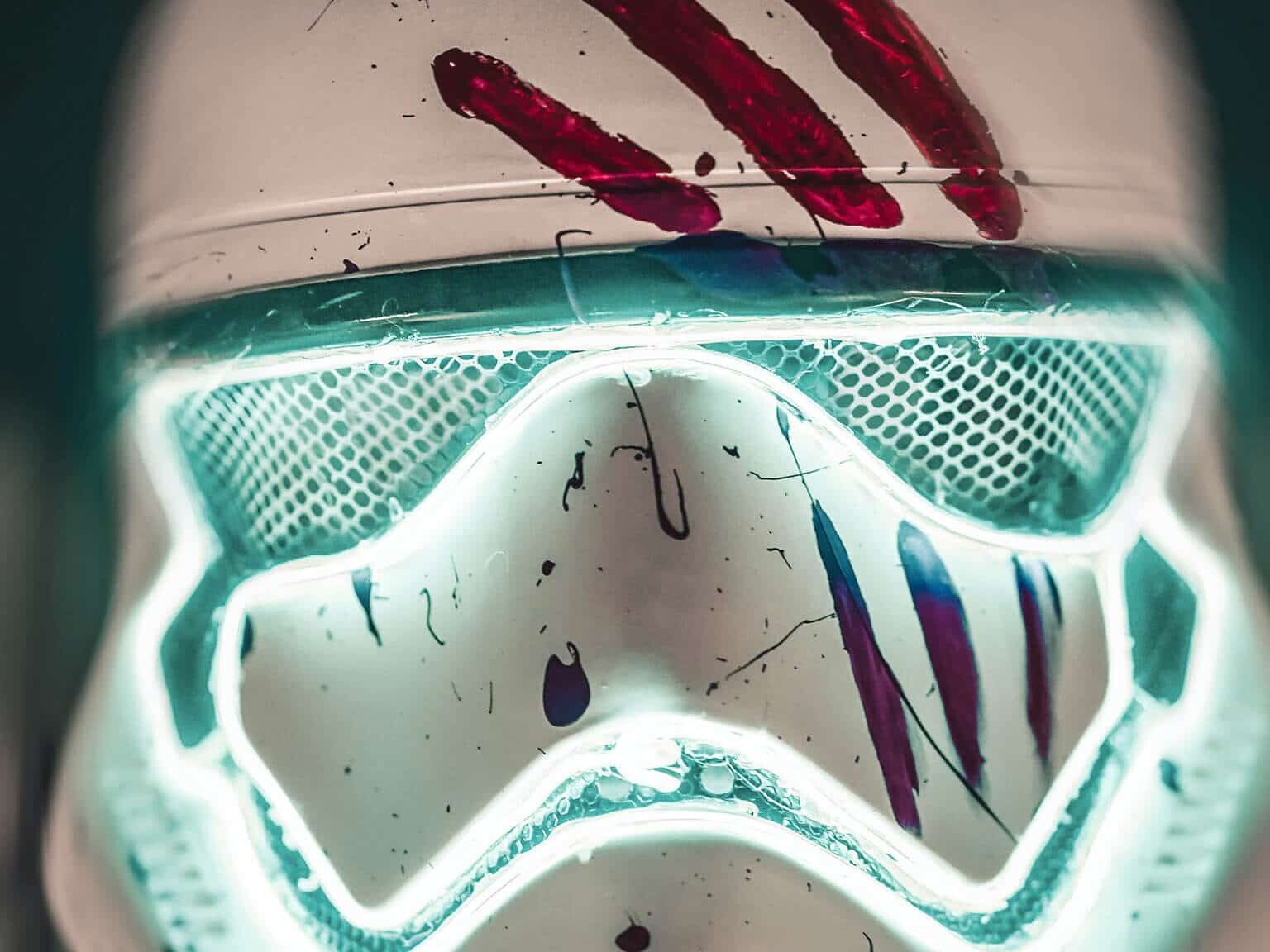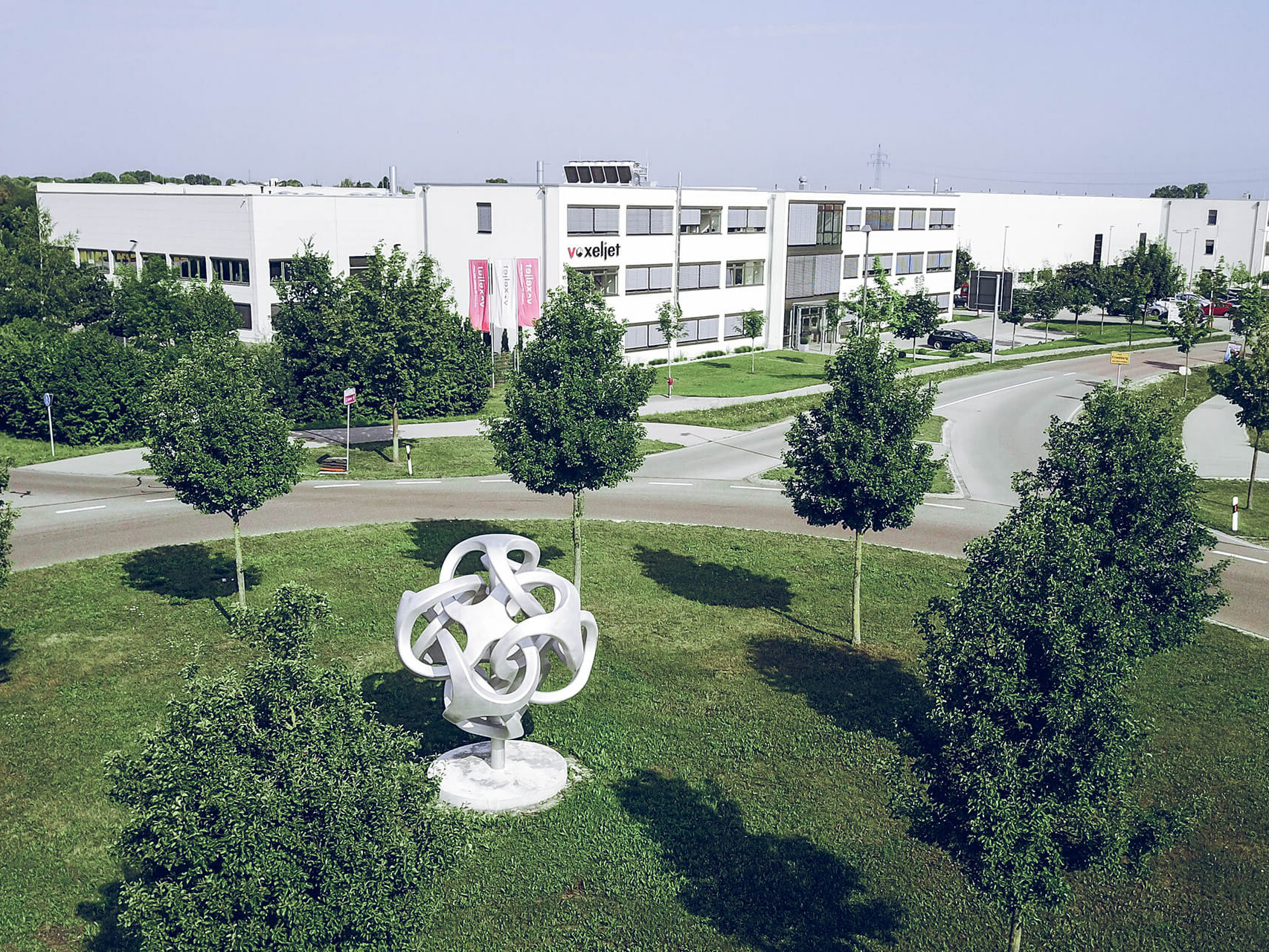- Home
- Case Studies
- Art and Design
- Bronze-cast sculptures produced with 3D printing
Bronze-cast sculptures producedwith 3D printing
For the Freedom Monument Sculpture Park, a memorial and public art park in the USA that deals with slavery and the civil rights struggle in the United States, the American artist Rayvenn Shaleigha D’Clark created three unique bronze sculptures with her work ‘Black Renaissance’, using 3D sand printing and other techniques.
From the discovery of America in 1492 until 1865, around 10 million people were enslaved in America. It was not until 1865, under the then President Abraham Lincoln, that slavery was officially abolished in America. Nevertheless, various forms of injustice and racism still exist in America today. The non-profit organisation Equal Justice Initiative (EJI) campaigns against racism and related injustices and initiated the Freedom Monument Sculpture Park, which extends over an area of 17 hectares along the Alabama River and commemorates the 10 million people who were enslaved in America. With impressive sculptures and unique works of art, the park honours the courage and resilience of the enslaved.
In 2023, EJI commissioned London-based artist Rayvenn Shaleigha D’Clark, an MTArt Agency artist, to design a sculpture for the park. In collaboration with millimetre, Maybrey Precision Castings and voxeljet, the MTArt Agency artist created the ‘Black Renaissance’ project over a period of 12 months, consisting of three unique sculptures.
Efficiency and precision through 3D printing
For the motifs of the statues, two adult and three youth models were scanned to create a 3D file of them. The 3D scans were digitally overlaid with several thousand so-called ‘dimples’ in order to better reproduce the people to whom the sculptures are dedicated.
The sculptures were then scaled to the desired size. As this corresponded to approx. 2.7 metres, it quickly became clear that producing them in one piece would be extremely complex and time-consuming, and rather impractical. The project was therefore deliberately realised using the 3D printing process, as it offers considerable time and cost savings compared to the traditional method.
In the conventional process, a model is made from aluminium or wood and then moulded in sand, to which a binder is added, in two mould halves. Cores are inserted into the mould to create cavities. The 3D printing process eliminates the need to produce a model or mould. In 3D sand printing, the negative mould is produced directly. This only requires digital CAD data, which in this case was provided by millimetre. All the individual parts of the sculptures were printed on our largest printing system, the VX4000. The 3D printer works with binder jetting technology, in which the CAD file is broken down into thousands of thin layers. A recoater then applies a wafer-thin layer of sand, which is then selectively printed by a print head. While the smallest details have to be painstakingly worked into the models by hand in the conventional process, 3D printing allows the model to be digitally modified and customised with little effort. This means that even the smallest details and complex designs can be realised.
This resulted in several negative sand moulds of the sculptures, which could then be assembled and filled with metal. In this case, Rayvenn Shaleigha D’Clark opted for bronze, which in her opinion emphasises the idea of durability. After cooling, the individual castings were welded together and finally carefully polished to smooth the surfaces and bring out the fine details with precision.
How 3D printing is revolutionising art
‘Black Renaissance’ is not just a reminder of slavery in America. With it, the artist also shows how she bridges the gap between tradition and technology and how the combination of digital and handcrafted techniques can be used to create a monument for eternity. D’Clark was included in the prestigious Forbes Under 30 2024 list, and this art commission is one of the largest ever awarded to a woman under 30. Drawing on her personal experience as an ethnic minority artist who faces difficulties in obtaining funding, she uses her voice to empower communities of colour through visual narratives.
Artists can now create complex structures and shapes that would be difficult or impossible using traditional techniques. 3D printing makes it possible to transform digital designs into physical objects, opening up new dimensions of creative expression. This has not only accelerated the creative process, but also introduced new materials and geometric freedoms. In addition, artworks can be reproduced in high precision and editions, democratising access to art and encouraging individualised, bespoke designs.
Industrial 3D printing systems
Our portfolio of industrial 3D printers ranges from compact systems for research to additive series production.
- Home
- Case Studies
- Art and Design
- Bronze-cast sculptures produced with 3D printing



















